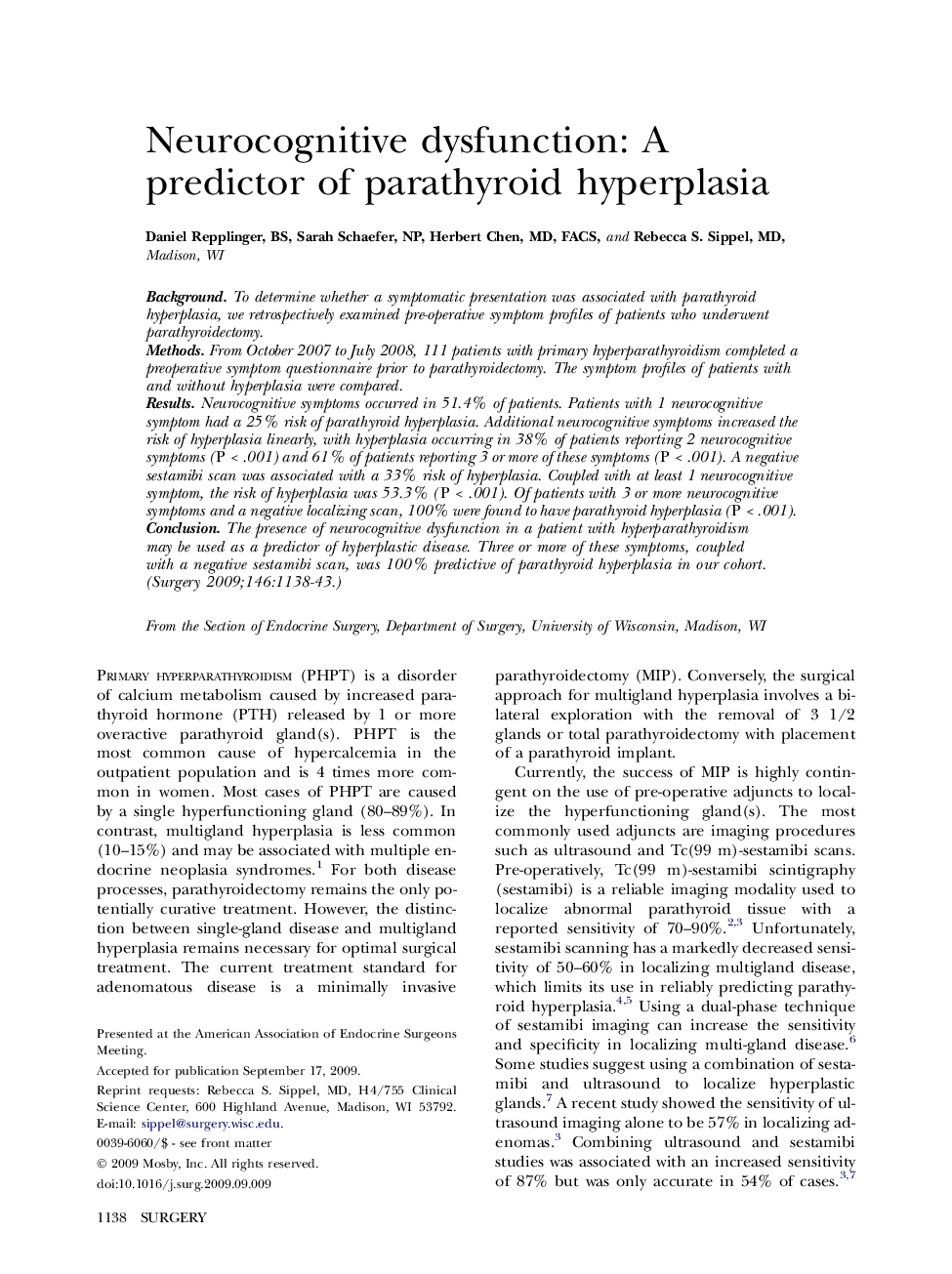| Article ID | Journal | Published Year | Pages | File Type |
|---|---|---|---|---|
| 4309116 | Surgery | 2009 | 6 Pages |
BackgroundTo determine whether a symptomatic presentation was associated with parathyroid hyperplasia, we retrospectively examined pre-operative symptom profiles of patients who underwent parathyroidectomy.MethodsFrom October 2007 to July 2008, 111 patients with primary hyperparathyroidism completed a preoperative symptom questionnaire prior to parathyroidectomy. The symptom profiles of patients with and without hyperplasia were compared.ResultsNeurocognitive symptoms occurred in 51.4% of patients. Patients with 1 neurocognitive symptom had a 25% risk of parathyroid hyperplasia. Additional neurocognitive symptoms increased the risk of hyperplasia linearly, with hyperplasia occurring in 38% of patients reporting 2 neurocognitive symptoms (P < .001) and 61% of patients reporting 3 or more of these symptoms (P < .001). A negative sestamibi scan was associated with a 33% risk of hyperplasia. Coupled with at least 1 neurocognitive symptom, the risk of hyperplasia was 53.3% (P < .001). Of patients with 3 or more neurocognitive symptoms and a negative localizing scan, 100% were found to have parathyroid hyperplasia (P < .001).ConclusionThe presence of neurocognitive dysfunction in a patient with hyperparathyroidism may be used as a predictor of hyperplastic disease. Three or more of these symptoms, coupled with a negative sestamibi scan, was 100% predictive of parathyroid hyperplasia in our cohort.
